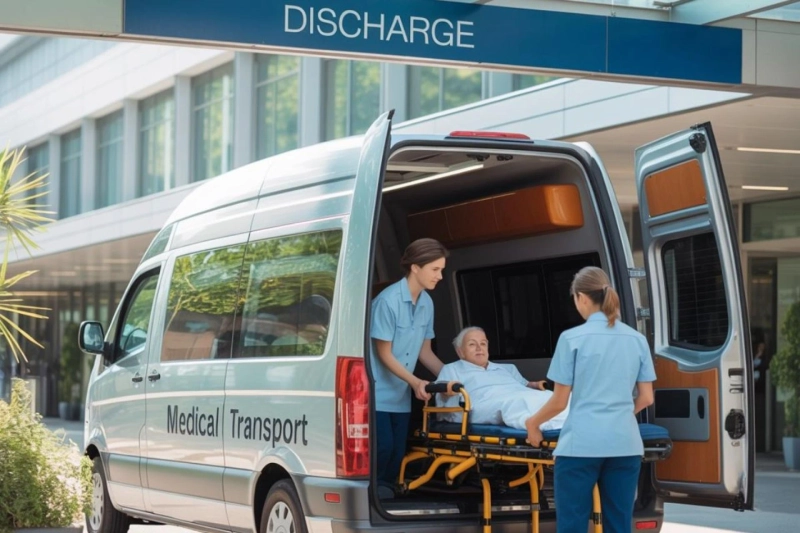When it comes to hospital discharges and inter-facility transfers, ensuring patient safety and comfort is a top priority. For patients who are non-ambulatory or require medical supervision during transit, stretcher services play a crucial role. These specialized transport services provide a safe, efficient, and comfortable way to move patients between healthcare facilities or from a hospital to their home.
In this blog, we’ll explore the importance of stretcher services, how they assist during hospital discharges and transfers, and why they are a vital part of patient care.
What Are Stretcher Services?
Stretcher services involve the transportation of patients who cannot sit upright or walk and need to lie down during transit. These services are typically provided by trained medical transport teams equipped with ambulances or specialized vehicles designed to accommodate stretchers.
Stretcher transport is essential for:
- Patients recovering from surgery
- Elderly individuals with limited mobility
- Those with severe injuries or chronic illnesses
- Patients requiring continuous medical monitoring
Benefits of Stretcher Services During Hospital Discharges
1. Safe and Comfortable Transport
After a hospital stay, many patients are too weak or injured to sit in a wheelchair or standard vehicle. Stretcher services ensure they remain lying down, reducing the risk of falls or further injury.
2. Medical Supervision
Qualified EMTs or paramedics accompany patients, providing necessary medical support during transit, such as oxygen administration, IV management, or vital sign monitoring.
3. Smooth Transition to Home or Care Facility
For patients being discharged to home, rehabilitation centers, or nursing homes, stretcher services ensure a seamless transfer without unnecessary strain on the patient or family members.
The Role of Stretcher Services in Inter-Facility Transfers
When patients need to be moved between hospitals or specialized care centers (e.g., from a general hospital to a cardiac or trauma center), stretcher services provide:
1. Continuity of Care
Medical teams ensure that the patient’s condition remains stable during transit, preventing complications that could arise from improper handling.
2. Specialized Equipment
Stretcher ambulances are equipped with necessary medical devices, such as cardiac monitors, ventilators, and emergency medications, to handle critical situations.
3. Reduced Stress for Patients and Families
Professional medical transport alleviates the burden on families who might otherwise struggle to arrange safe transportation for a bedridden loved one.
When Should You Consider Stretcher Services?
- After major surgery (e.g., hip replacement, spinal procedures)
- For patients with severe fractures or mobility restrictions
- When transferring a patient to a long-term care facility
- For elderly or critically ill individuals who cannot sit for prolonged periods
Similar Link: Together Strong: Tips For Families On How To Help A Family Member With Disabilities
Choosing the Right Stretcher Transport Service
When selecting a stretcher service, consider:
✔ Certified and Licensed Providers – Ensure the service has trained medical personnel.
✔ Vehicle Safety Standards – The ambulance should be well-maintained and equipped for emergencies.
✔ Insurance Coverage – Verify whether the service is covered by insurance or Medicare/Medicaid.
Final Thoughts
Stretcher Transport services bridge the gap between hospital care and a patient’s next destination, whether it’s home or another medical facility. By providing safe, monitored, and comfortable transport, these services play a vital role in patient recovery and continuity of care.
If you or a loved one requires non-ambulatory transport, always opt for a professional stretcher transport service to ensure a smooth and secure transition.



